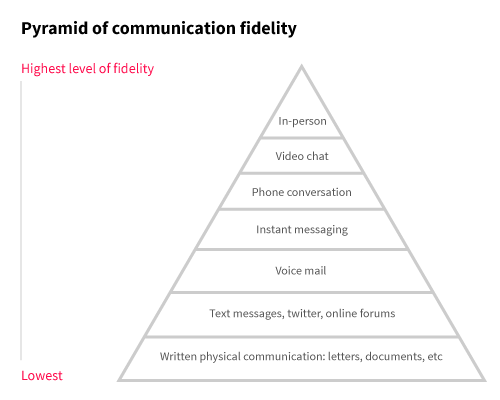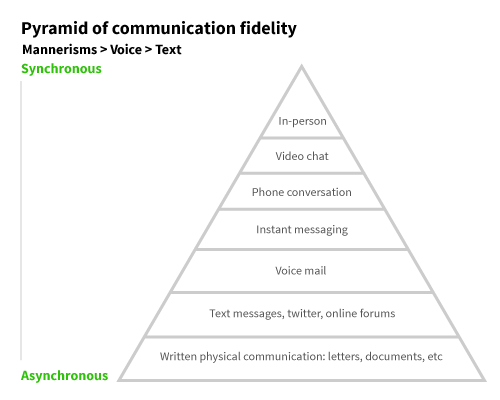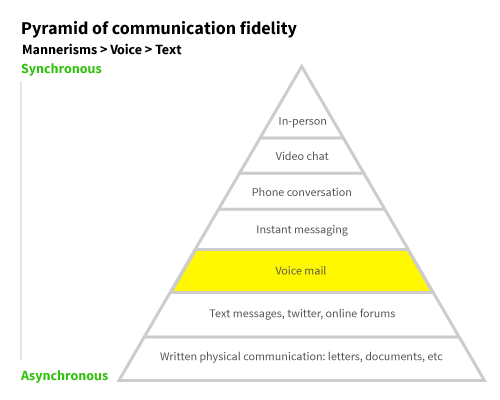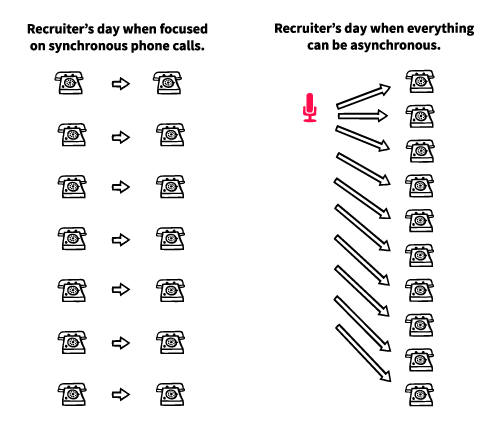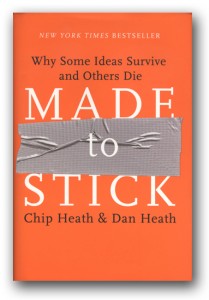My colleague Pehr once said something interesting about Twitter during lunch. To paraphrase:
People are looking at their mobile screens at such accelerating rates. It’s fascinating to look at Twitter’s role in it. Twitter works because it seamlessly fits into our daily brain activity, and thus our lives. It succeeds because it doesn’t produce a mental burden when scanned, but yet provides vast, diverse quantities of information. The 140 character size is perfect for always providing something new and interesting, yet is never painful.
It’s no secret the overall increased activity people have with their mobile devices. Many people are observing and critiquing this behavior. (Luke Wroblewski is one of my favorite authorities.) But specifically with Twitter, I’d like to take a moment to discuss why it’s one of the catalysts for this trend, and what it is we yearn for.
A quick note: I’m purposely leaving out Facebook from this discussion. It’s a different subset of the root concept, but more complex and worthy of its own critique.
Why do we check Twitter on our mobile devices?
Because it’s quick, informative, intuitively organized, instantly up-to-date, and rarely (if ever) painful to do so.
What do we check?
Comments from friends, information from “in the know” pundits, insight from personal celebrities (artists, musicians, authors, actors, etc; people we personally enjoy), and general news from our macro and micro worlds.
Twitter Works
The blessing of The New. We habitually check Twitter on our mobile devices because the feeling of newness draws us. The pain to digest the constant fire hose of updates from interests is zero.
There are limits, however. These interests must be sought out. I find it difficult to track down the friends, musicians, and so forth I care to follow. And then there is a period where you aren’t sure who are worth engaging. And what if it’s not really them, but a ghost writer or, worse, a bot? Twitter is mostly human (that is, obvious to identify stripper spam from your college roommate), but that’s a problem because then the information is basically social in nature. The information is rarely personal.
Whenever you do ease into the right amount of interests populating your stream with bits of information, there is no guarantee that the signal-to-noise ratio will fit your preference.
The fact that Twitter sees itself as a social platform is the biggest limitation. Eventually, the novelty of social information will slowly dwindle, settling on a different ratio for the average user. (I think impact from demographics can be tracked as well. For example, age: teenagers have a different threshold of info going in and out of their consciousness while retirees just want to see and share pictures of their grandkids.)
Expanding The Twitter Platform
For Twitter to be truly useful, it needs to expand beyond the human-to-human social engagement. I propose a new concept for Twitter’s platform.
Twitter should be a short message platform.
Let’s break down each word:
- Short
As discussed earlier, the reason Twitter works is because 140 characters is perfect to deliver vast amounts of messages with zero mental burden to digest.
- Message
A message is the most generic, abstract way to explain how information travels. Information only exists if it is communicated. “Messages” are the package that delivers information in tidy boxes. Messages are en entity—the action-based object that makes communication possible.
- Platform
The marketplace that brings together users and providers. Twitter’s platform gathers and distributes tweets in many forms.
The troublesome word for Twitter is currently “message”. They’ve limited themselves to the social subset of its users’ lives. They need to expand the abstraction and target all modes and types of information people receive on a daily basis.
The real key is to expand contributors from simply people to inanimate objects and entities as well. For example, what if in my Twitter stream I had tweets with the following types of messages:
- My car telling me it’s time for an oil change with a link to Google Maps, displaying all the shops in the area, prices, and which ones are running specials. (Realize that “Maint. Req.” on a car dashboard is nothing more than a message less than 140 characters telling you something of importance.)
- My credit card telling me my balance is due, how much, and when the deadline is.
- My doctor’s office telling me it’s been two years since my last physical.
- Or better yet, my body telling me that this week is when 26-year-old males have their teeth/eyes/prostate/whatever checked out.
- The weather telling me it’s going to be rainy and cold tomorrow.
- My package telling me it will be arriving today at the office.
- My subpump telling me it just broke and I better get home ASAP.
- My fridge saying it blew a motor, and I should pick one up on the way home to fix. It shares links with me to the part’s information, documentation on how to fix it, and stores in the area where I can pick it up.
- The dryer telling me the clothes are done. Good thing too because I forgot about them when I was trying to fix the fridge.
- And so on and so forth. The possibilities are literally endless.
Now, Twitter becomes the information platform of my life because it is the supreme message platform of my life. So easy to quickly check and scan, but now I have personal—not social—reasons.
Think of how this beats the pants off every other business model they could approach. Twitter can serve you an ad to the fridge motor because you just found out you need it. It’s the absolute best, quickest, most relevant, most targeted way to serve advertisements.
Other points of interest that allude to success:
- Roughly 90% or more of Twitter users are lurkers. We, as a population, check way more than we socially share. Why does Twitter cater to the sharers? Filling the lurkers’ timelines with tweets that are meaningful to them is ok, and a much better business model.
- Every inanimate object communicates with you in some way.
- And most only need 140 characters.
My wife, a perfect target for this concept, had some feedback.
Isn’t the purpose of Twitter, and thus social networks in general, to allow people to escape from the things they need to do in real life? I need to change the cat’s litter box, but I don’t want to. I’d rather quickly check Twitter or Facebook instead. A normal person would be so annoyed having these toys tell me I’m not doing something I should be doing.
Touché. But this is why Twitter has a ceiling.
The Future
I see the future as such:
- Everything will be creating data in the future. Out clothes. Our cars. Our social circles. Everything.
- Data is the foundation of information.
- Information is only useful if communicated.
- Humans require messages in order to process communication.
Twitter’s dynamics make it perfectly situated to be the short message platform of this future.

